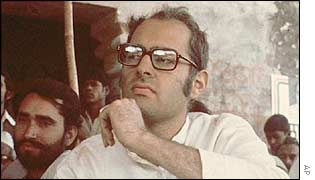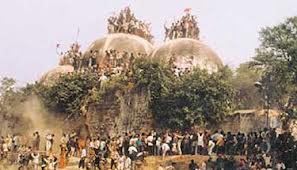Vivek Kaul
Manish Tewari, the minister of information and broadcasting, who probably spends more time in television studios defending the Congress party, than in his office, recently issued what his ministry called an ‘advisory’ on the way television channels have been covering the protests against the gang rape of a 23 year old women in a moving bus in Delhi.
A part of the advisory had this to say “It has been observed that some private satellite news TV channels in their 24X7 coverage have not been showing due responsibility and maturity in telecasting the events relating the said demonstration and such a telecast is likely to cause deterioration in the law & order situation, hindering the efforts of the law enforcing authorities.
Whereas Rule 6(1)(e) of the Cable Television Networks Rules, 1994, which contains the Programme Code to be strictly adhered to by all private satellite television channels, provides that no programme should be carried in the cable service which is likely to encourage or incite violence or contains anything against maintenance of law and order or which promotes anti-national attitude.”
After Tewari’s senior in the party as well as the government Sushil Kumar Shinde equated the protesters in Delhi to Maoisits, Tewari wants the nation to believe that the coverage of the protests in the heart of the capital could promote an anti-national attitude. What has the world come to?
I can’t help but compare this situation to the scenario in the mid 1970s when Indira Gandhi, as the Prime Minister had declared a state of internal emergency and the politicians of the day directed the newspapers to fall in line. (There were no television channels back then other than the state owned Doordarshan).
As Vinod Mehta writes in The Sanjay Story “The Chief Censor of India issued a dictat to the press…: ‘No criticism of the family planning programme. This includes letters to the editor.’”
Indira Gandhi’s younger son Sanjay had unleashed an ambitious male sterilization programme to control India’s burgeoning population. “The problem, of course, was that Sanjay did not have the time for gentle act and sustained persuasion. He wanted results, latest by day after tomorrow. A young man in a hurry he disastrously miscalculated the quantum of ‘motivation’ necessary to get people to the operating table,” writes Mehta.
Given this, Sanjay’s ambitious programme came in for a lot of criticism and one of the impacts of that was that the press was asked not to criticise it. The same thing albeit in a milder way is happening right now. Tewari’s veiled threat against covering the Delhi rape protests comes after his predecessor Ambika Soni ( a known Sanjay Gandhi crony) stopped government advertisements to the Daily News and Analysis (Read about it here) for a while late last year.
The state of internal emergency was declared in India with effect from the midnight of June 25, 1975. That morning most Delhi newspapers did not come out because the Congress government had ordered power supply to be cut in Bahadur Shah Zafar Marg where most newspaper offices are based in Delhi. As Tavleen Singh writes in Durbar “But with typical Indian ineptitude, the officials had forgotten that the Stateman and the Hindustan Times had their offices in Connaught Place.”
Soon Inder Kumar Gujral who was the information and broadcasting minister was dismissed given that he wasn’t deemed to be effective enough. “Sweet, mild Inder Gujral was replaced by Vidya Charan Shukla. The story of the minister’s sacking that drifted around newspaper offices was that Mr Gujral, an old friend of Mrs Gandhi, had objected to Sanjay ordering him around and Sanjay had responded by ordering his immediate dismissal. The unsmiling brutish Shukla warned us at the first press conference he held that any defiance of press censorship would be dealt with harshly. He was soon dictating which stories we should give ‘prominence’ to and these were usually related to an event attended by Sanjay Gandhi or an idea that had come from him,” writes Singh in Durbar. While it is difficult to see Manish Tewari morphing into another Vidya Charan Shukla, his recent dictat to television channels is a milder form of what Shukla did with the newspapers in the mid 1970s when emergency was in operation.
The period of emergency also saw the power in the Congress party pass onto the next generation i.e. from Indira Gandhi to Sanjay Gandhi. As Mehta writes “Around November ’76 Mrs Gandhi was finally sold on dynastic succession not only on the ground of filial devotion but because she thought that the country’s destiny safe in her son’s hands…No coincidence then that in December ’76 the Censors issued a written directive to the press asking it to refrain from using the prefix ‘youth leader’ in connection with Mr Sanjay Gandhi.” Sanjay Gandhi became the real leader ‘overnight’ and gradually took over the running of the government of the day from his mother Indira, despite never being a part of it.
Along similar lines Rahul Gandhi, the proverbial prince in waiting, will lead the Congress party in the 2014 Lok Sabha elections, it was recently revealed. What remains to be seen is whether Rahul gradually takes over the running of the government from his mother Sonia as well, like his uncle did from his mother nearly 36 years back. Sonia Gandhi despite never being a part of the government wields tremendous control on it.
The emergency was a blot on the Indian democracy. But it didn’t really impact the man on the street, the average Indian, the man who actually goes out and votes, and who we now know as the aam aadmi, in any major way. “In February ’76 a Bombay monthly, now undeservedly extinct, sent a reporter to the interior of Maharashtra to determine what impact the Emergency had had at the grassroots level. The reporter returned with the not unexpected news that most villagers didn’t even know there was an emergency in the country,” writes Mehta.
Until of course Sanjay Gandhi caught onto the idea of male sterilization to control the Indian population. But he was a man in a hurry and soon forced sterilizations were being carried out through out North India and states like Maharashtra and Rajasthan. Quotas were set for different chief ministers. Navin Chawla, another known Sanjay crony, who rose to become the Chief Election Commissioner of India, and who was one of the bureaucrats helping Sanjay Gandhi implement his hair-brained scheme, said “One had to prevent poor people living like animals and breeding more poor people.”(As Vinod Mehta quotes him in The Sanjay Story).
Soon forced sterilizations were happening all over the place. Even the beggars around the Taj Mahal in Agra were rounded up and forced to undergo nasbandi. And this finally made people realise that an emergency was on in the country. As Mehta writes “Before June ’76 the Emergency was a peripheral phenomenon in rural India. The constitutional changes, detention of opposition leaders, curtailment of fundamental freedoms, censorship of the press, were hardly likely to affect life of the Indian peasant….This ignorance was rudely shattered with the launching of the sterilization programme. And it was this which took Emergency to the heart of India, to its hamlets and small towns.”
When elections finally happened in 1977 this turned out to be a major issue and the Congress party was booted out of power the first time since independence. The entire frustration of the emergency came to be consolidated largely around one issue and that was nasbandi. Mehta quotes author Sasti Brata as saying “The elections have not proved that democracy flourishes in India, the elections have only proved that men don’t like to lay on tables and have their things cut off.”
Is something similar happening in an India, which is clearly more urban now than it was in the 1970s, right now? Has the frustration of being under nearly eight and a half years of misrule of the Congress party led UPA, all getting consolidated under the issue of a 23 year old women being raped in Delhi? The nation has forgotten the 2G scam. The commonwealth games scam. The nexus between Robert Vadra and DLF. The coalgate scam. We have adjusted to the price of almost everything going up at a very fast pace and the fact that our salaries are not going anywhere. We don’t seem to mind the high EMIs.
But will we forget the fact that a 23 year old women who had her whole life in front of her and who was getting back home from watching a movie on a late cold Delhi evening, happened to board the wrong bus, only to be raped and almost killed by a set of goons?
That time will tell!
The article was originally published on www.firstpost.com on December 27, 2012.
(Vivek Kaul is a writer. He can be reached at [email protected])




